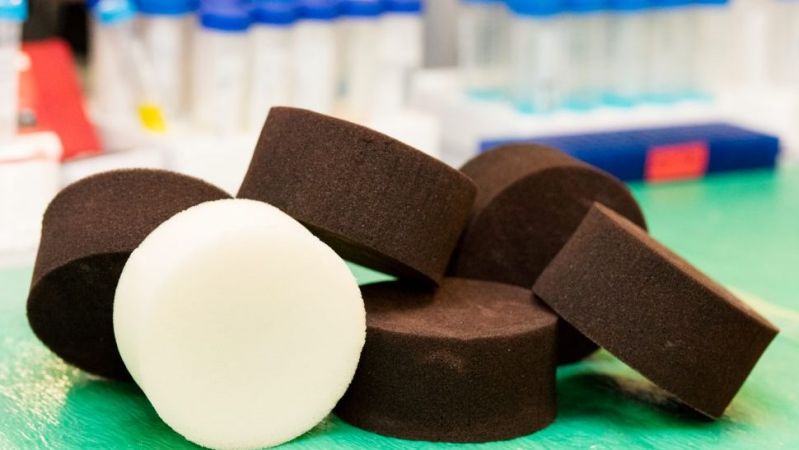Nanosponge Removes Mercury from Water
Published on by Water Network Research, Official research team of The Water Network in Technology
Professor Abdennour Abbas and his lab team created a sponge that can absorb mercury from a polluted water source within seconds.
Thanks to the application of nanotechnology, the team developed a sponge with outstanding mercury adsorption properties where mercury contaminations can be removed from tap, lake and industrial wastewater to below detectable limits in less than 5 seconds (or around 5 minutes for industrial wastewater).

Image source: Big Ten Network
The sponge converts the contamination into a non-toxic complex so it can be disposed of in a landfill after use. The sponge also kills bacterial and fungal microbes.
Think of it this way: If Lake Como was contaminated with mercury at the EPA limit, the sponge needed to remove all of the mercury would be the size of a basketball.
This is an important advancement for the state of Minnesota, as more than two thirds of the waters on Minnesota's 2004 Impaired Waters List are impaired because of mercury contamination that ranges from 0.27 to 12.43 ng/L (the EPA limit is 2 ng/L). Mercury contamination of lake waters results in mercury accumulation in fish, leading the Minnesota Department of Health to establish fish consumption guidelines.
A number of fish species store-bought or caught in Minnesota lakes are not advised for consumption more than once a week or even once a month. In Minnesota's North Shore, 10 percent of tested newborns had mercury concentrations above the EPA reference dose for methylmercury (the form of mercury found in fish).
This means that some pregnant women in the Lake Superior region, and in Minnesota, have mercury exposures that need to be reduced. In addition, a reduced deposition of mercury is projected to have economic benefits reflected by an annual state willingness-to-pay of $212 million in Minnesota alone.
According to the US-EPA, cutting mercury emissions to the latest established effluent limit standards would result in 130,000 fewer asthma attacks, 4,700 fewer heart attacks, and 11,000 fewer premature deaths each year. That adds up to at least $37 billion to $90 billion in annual monetized benefits annually.
In addition to improving air and water quality, aquatic life and public health, the new technology would have an impact on inspiring new regulations. Technology shapes regulations, which in turn determine the value of the market. The 2015 EPA Mercury and Air Toxics Standards regulation was estimated to cost the industry around of $9.6 billion annually in 2020. The new U of M technology has a potential of bringing this cost down and make it easy for the industry to meet regulatory requirements.
Research by Abbas and his team was funded by the MnDRIVE Global Food Venture, MnDRIVE Environment, and USDA-NIFA. They currently have three patents on this technology.
To learn more, visit www.abbaslab.com.
Source: University of Minnesota
Read more: Big Ten Network
Read the papper: A Nanoselenium Sponge for Instantaneous Mercury Removal to Undetectable Levels
Media
Taxonomy
- Treatment
- Reclaimed Wastewater
- Treatment Methods
- Sewage Treatment
- Resource Management
- Water Resource Management
- Technology
- Wastewater Collection
- Filtration
- Ecosystem Management
- Pollution
- Natural Resource Management